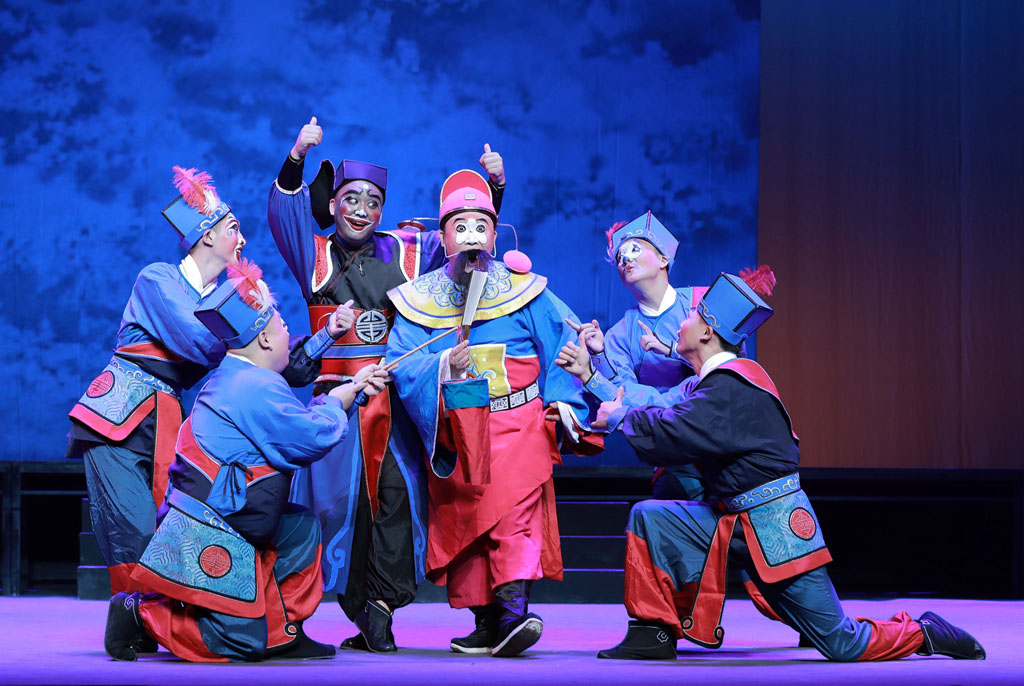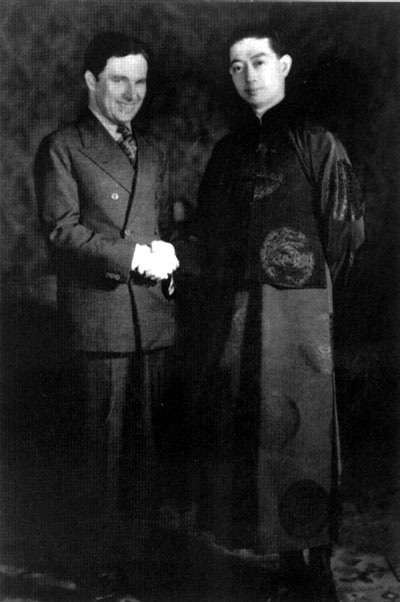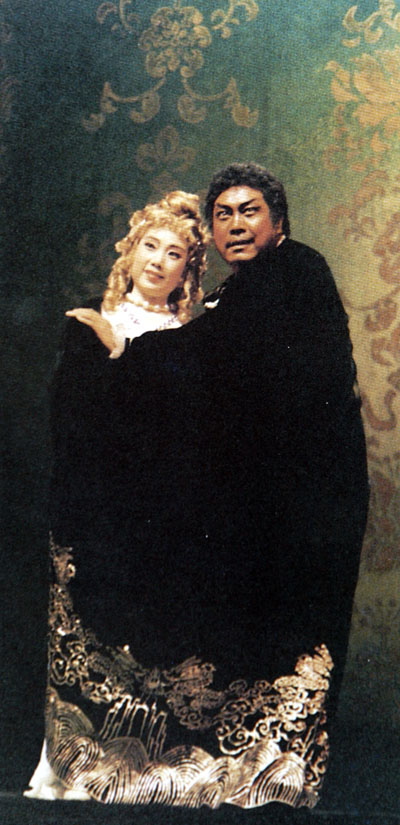Western Flavors in Chinese Theater Art

In 1930, famous Chinese Peking Opera artist Mei Lanfang landed in the United States to give a performance. People from theater and film circles joined other interested spectators to embrace this rare chance to taste Chinese theater art. A wide variety of American spectators, including British-born film star Charlie Chaplin, were amazed by the Eastern art.
In 1935, Mei Lanfang and his team visited the Soviet Union for a performance tour, stirring up a wave of adoring and studying Chinese theater art in Moscow and other cities. Celebrities from across the country gathered to watch Peking Opera. Mei Lanfang wowed audiences with minimal costume and set, which surprised many famous Soviet theater legends. Famous artists from the Soviet art circle such as Konstantin Stanislavski, Vsevolod Meyerhold, and Sergei Eisenstein expressed deep admiration for the profound Chinese theater art presented by Mei Lanfang. German theater director Bertolt Brecht credited inspiration from Mei Lanfang’s performance for his “distancing effect” theory.

Mei Lanfang’s overseas tours not only showed the world the charm of Chinese theater art, but also offered a window for many to better understand China and traditional Chinese culture.
After the founding of the People’s Republic of China in 1949, Chinese theater art became an important conduit for cultural exchange between China and other countries. Famous troupes and artists practicing various major types of Chinese theater art went abroad to perform representative plays and build bridges for friendship between China and foreign countries.
Chinese opera troupes visiting foreign countries primarily sought cultural exchange, so the plays they performed were mainly classical Chinese theater art. They conveyed historical stories, humanistic spirit, and moral values of China. Alongside local officials and cultural consumers, overseas Chinese people accounted for the majority of the audience. Watching operas brought from the motherland helped ease their homesickness.
Since the beginning of China’s reform and opening up in the late 1970s, overseas performances of Chinese theater art started embracing business opportunities in addition to fostering cultural exchange. Performances were no longer confined to traditional Chinese theater art. Interpretation of Western classics through Chinese theater art forms also emerged.
During this period, many operas with both Chinese and Western elements were staged. The Peking Opera version of Othello created and performed by the Jingju Theatre Company of Beijing in the late 1970s was a highly successful Shakespearean adaptation. The Crimson Palm, performed by the Shanghai Kunqu Opera Troupe, was adapted from Macbeth. Peking Opera shows Dragon King and Sakamoto Ryōma were jointly developed by China and Japan in the 1980s. The Kunqu Opera play Twilight Crane is based on a Japanese story. These works either used Chinese theater art forms to perform foreign masterpieces or injected Chinese theater art with elements of Western art. They all combined Eastern and Western cultures and arts.

Two major styles are used to adapt Western operas to Chinese theater style. One is to costume characters in Western-style clothing and hair while singing in Peking Opera rhyme. During the performance, performers play the roles of a Western opera with only a subtle Chinese theater style. Because of incompatible elements of Chinese theater art and Western operas such as names, certain behavior, and story structure, performances can be strange.
The other method is to adapt Western operas to comparable Chinese stories and characters while saving the story structure of the original work, so actors can play Chinese roles with natural dialogue and action against a Chinese cultural backdrop. This method avoids conflict in terms of cultural background, language, action, and style, and makes the production more natural. Many consider this style of opera a purer form of art because it provides reasonable space for the unique characteristics of Chinese theater art. Western audiences have also been amazed and attracted by the emotions expressed by this unique Eastern style and often left with an even stronger impression than Western plays.
For example, a Henan Opera adaptation of Strindberg’s Miss Julie was produced by the acting department of the National Academy of Chinese Theatre Arts. A Henan Opera troupe presented an adapted version of Much Ado About Nothing. The original work was adapted into a Chinese story, and Chinese characters were used. The opera’s singing and dancing was still on full display, creating space for reasonable exploration of singing and dancing. Finding works more easily adapted to a traditional Chinese theater art structure has produced stronger results.
By utilizing plotlines of plays familiar to Western people, foreign spectators can more easily understand productions without subtitles and better focus on appreciation of the dramatic art of Eastern culture presented by Chinese artists. When audiences are already familiar with the content of the play, they are more able to understand the Chinese culture fueling the production. In the internet era, Chinese theater art is playing an even more active role in international cultural exchange. Blending cultures in Chinese theater art is the modern trend.
Related articles
-
 Opera honors female poet
Opera honors female poetMore
-
 Acrobatic show highlights youth pursuing their dreams
Acrobatic show highlights youth pursuing their dreamsMore
-
 Carnival of Suzhou's rich culture and arts a pleasure for Beijing audience
Carnival of Suzhou's rich culture and arts a pleasure for Beijing audienceMore
-
 Foreigners display their Chinese opera chops on TV
Foreigners display their Chinese opera chops on TVMore
-
 Shanghai Ballet set to debut its rendition of theater classic
Shanghai Ballet set to debut its rendition of theater classicMore
-
 Theatrical work recounts poet Qu Yuan's life and dream
Theatrical work recounts poet Qu Yuan's life and dreamMore
